by Sandra Gulland | Apr 4, 2011 | Baroque Explorations |
In researching the marriage of Louis XIII and Anne of Austria (post on that to come), I got sidetracked by this image of fireworks celebrating their entry into a city:
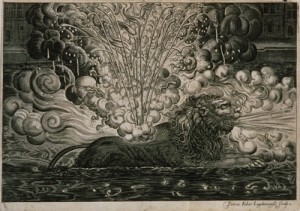
Now and then in my research I read of an extraordinary 17th century fireworks display, spelling out the name of the Sun King, for example, or illustrating a battle.
I think: Oh, sure.
However, fireworks technology—if one could call it that—seemed to be more advanced than what we have today.
The fireworks on the Seine in 1660 on the occasion of the entry of Louis XIV after his marriage, culminated in 250 stars shooting from the tops of the masts of a ship that had been built for the show, forming the names of King and Queen. [My rather free translation from Traité des feux d’artifice pour le spectacle by Frézier.]
Here are a few more images—not necessarily from the 17th century, but certainly close:
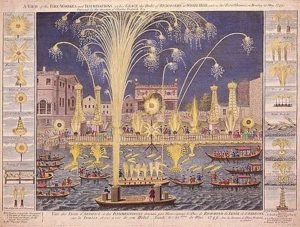
This last …
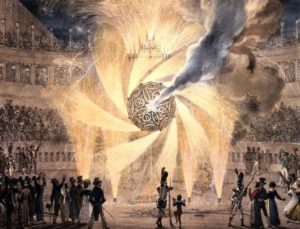
reminds me of the thrill of being just a tad close to fireworks a few years back in San Miguel de Allende, Mexico. (Photo of me and my daughter Carrie.)

by Sandra Gulland | Nov 11, 2010 | Baroque Explorations |
I’ve recently discovered Europeana, a great site for text, videos, and images. It’s especially great for portraits. Here, for example, are some portraits of Athénaïs de Montespan, some of which I’ve never seen before:

This one above is credited to Ernest and Mignard. One can see how plump she has become. Here is another by Mignard with a similar theme:

Athénaïs is often portrayed with her children, no doubt to secure her link to the King. This is another portrait by Mignard:

And another:
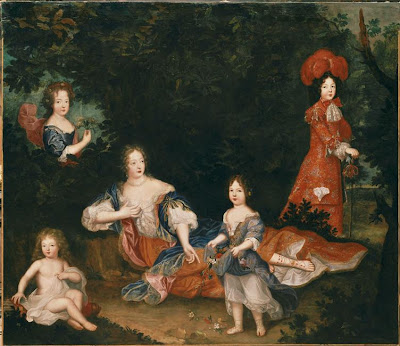
And this one by Charles de La Fosse:
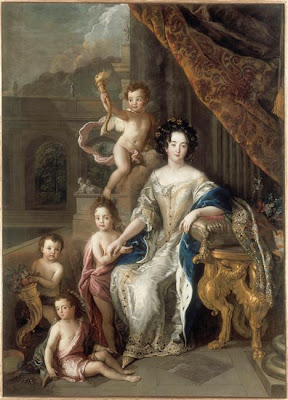
This image by Pierre Gobert is presumed to be of her, and I suspect it likely so:

Her lounging pose was unusual for the time; comfort was a new concept. Here again is a striking study by Nicolas Mignard:

This image of Athénaïs at her chateau at Clagny (Versailles now) is curious: bare legs!

This image, artist unknown (and previously thought to portray Louise de la Vallière) shows a younger Athénaïs with droopy eyes. Might this have been considered the come-hither look?

Here is another, likely even younger portrait, showing her unusual and slightly protruding eyes.

Here is a fashon plate, dated 1694. I doubt very much that Athénaïs would have been so slender at that time.

I could easily be on this site all day.
“Mme Guillotine” recently posted this very unusual and stunning portrait of Montespan on Instagram.
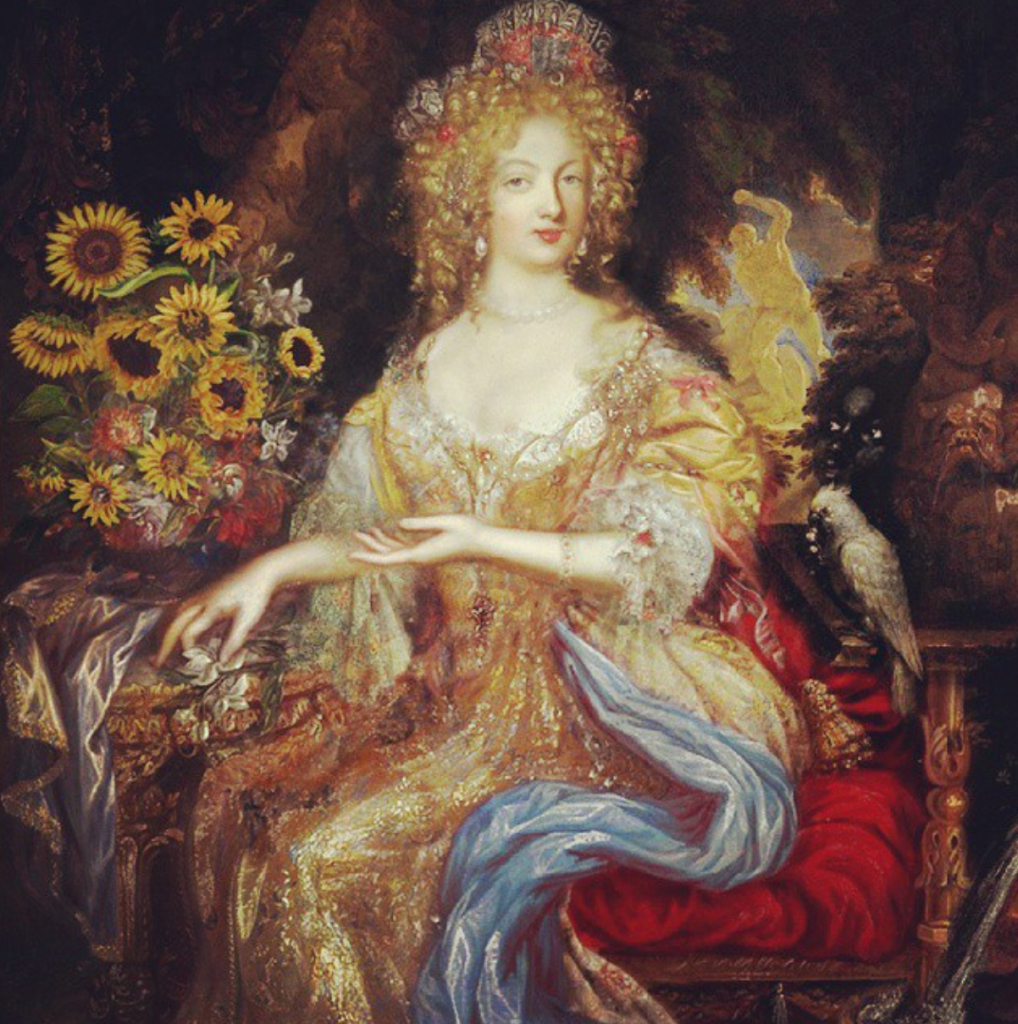
I’d love to know who the artist is. If you know, let me know!
by Sandra Gulland | Oct 1, 2010 | Baroque Explorations |
Louis XIV, le destin d’un roi is a stunning on-line publication …
I only wish I could actually read it!
by Sandra Gulland | Apr 9, 2010 | Baroque Explorations, Uncategorized |

{The Dauphin Louis of France and his nursemaid, Dame Longuet de la Giraudière, 1638.}
Dame Longuet may have been Louis’s first nursemaid, but she certainly was not his last. He was born with two teeth, and eight more women tried to fulfill the role, but resigned in defeat.
Observing the future King’s ferocious appetite, the Swedish ambassador advised the neighbors of France to “take precautions.”
Finally, robust Pierrette Dufour persisted. She became the King’s nurse when he was six months old and she nursed him for eighteen months, suffering many bites, which she is said to have healed with the finger of Saint Anne. (Which was … ?)
In recognition of her “good milk,” she was ennobled in 1563. She later became maid to the Queen Mother, Anne of Austria, and then the Queen, Marie-Thérèse.
It was Pierrette Dufour who had the honour of ceremoniously waking the King with a kiss each morning, and even going with him on campaigns.
Note that the baby is swaddled according to 17th century custom. It was believed that the child would thus grow straight and would not remain curved like an animal. Baby Louis wears the cordon bleu of the Holy Spirit which the royal children of France receive at birth.
by Sandra Gulland | Apr 19, 2009 | Adventures of a Writing Life |
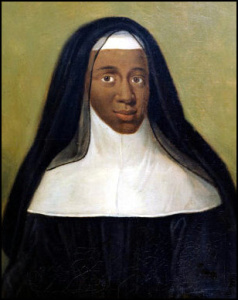
I’ve been researching the rumor of the “Black Nun of Moret” — allegedly the Queen’s baby by Nabo, her African dwarf. You can read the results of my research here: “The Queen’s mystery daughter.”
What struck me is that this would be a fine 2-week period in which to set a novel — there are a million dramas going on at this time:
Queen was expected to die: she begged the King to forsake his mistress, Louise de la Vallière.
Prayers and processions were ordered.
Meanwhile, former Minister Fouquet‘s trial was heating up. Fouquet’s wife provided the Queen with a secret remedy that in fact cured her — but does not, nonetheless, save Fouquet.
Fouquet is sentenced on December 20, but only condemned to perpetual banishment, which infuriates the King, who changes it to life imprisonment in Pignerol.
Meanwhile, a comet streaks across the night sky.
The Queen-mother collapses from breast cancer.
On December 26, the Queen’s “monster” baby dies at one month, and is buried at Saint Denis. The King is terribly grieved.
The offending (and suspected) dwarf Nabo, much beloved by the Queen, disappears — into the Bastille, some claim, to emerge as the Man in the Iron Mask.
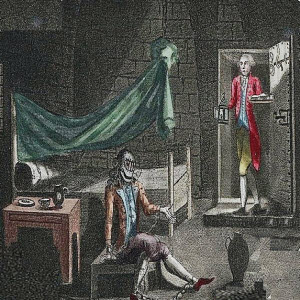
I love this last flight of fancy, but it is impossible, of course. If the Man in the Iron Mask were an African dwarf, we would have known.

Link to my essay, “The Queen’s mystery daughter”
Link to my Blog Tour details





















